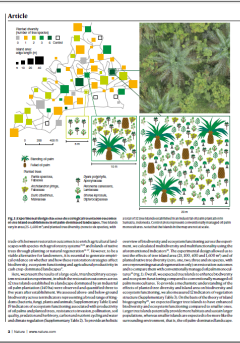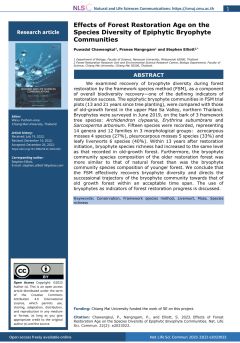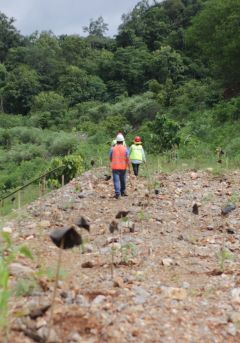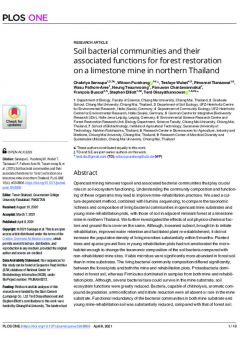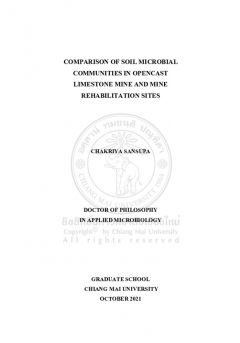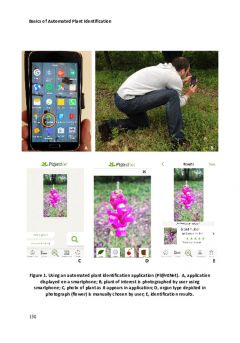Publications
1: Tree islands enhance biodiversity and functioning in oil palm landscapes
ABSTRACT: In the United Nations Decade on Ecosystem Restoration, large knowledge gaps persist on how to increase biodiversity and ecosystem functioning in cash crop-dominated tropical landscapes....
2: Effects of forest restoration age on the species diversity of epiphytic bryophyte communities
ABSTRACT: We examined recovery of bryophyte diversity during forest restoration by the framework species method (FSM), as a component of overall biodiversity recovery—one of the defining...
3: Living Fungi in an Opencast Limestone Mine: Who Are They and What Can They Do?
Abstract: Opencast limestone mines or limestone quarries are considered challenging ecosystems for soil fungi as they are highly degraded land with specific conditions, including high...
4: Seed dispersal and seed predation between natural forest and restored forest area in Mae Rim District, Chiang Mai
ABSTRACT: Seed dispersal and seed predation are natural mechanisms reflecting natural regeneration. The objective of this study was to compare seed dispersal and the effect of seed predators in a...
5: Comparative study on tree seedling growth rate and diversity between a natural forest and a restored forest area in Mae Rim District, Chiang Mai
ABSTRACT: In 1967, Thailand had forest cover as high as 53.22 percent of the country's land area, but in 2021 the forest area was reduced to 31.68 percent, of which 63.99 percent was forested in...
6: The diversity of mammal in natural and restored forest in Mae Rim district, Chiang Mai Province
Forest areas in Mae Rim District, Chiang Mai Province, have been converted to farmlands, causing the area to deteriorate and affecting wildlife habitats. Various organizations are working to...
7: Soil bacterial communities and their associated functions for forest restoration on a limestone mine in northern Thailand
ABSTRACT: Opencast mining removes topsoil and associated bacterial communities that play crucial roles in soil ecosystem functioning. Understanding the community composition and functioning of...
8: Comparison of Soil Microbial Communities in Opencast Limestone Mine and Mine Rehabilitation Sites
Opencast mining is considered as an extreme form of land degradation, requiring an intensive array of rehabilitation practices. The mine rehabilitation practice, in the semiopencast limestone mine...
9: Effect of microsite light on survival and growth of understory natural regeneration during restoration of seasonally dry tropical forest in upland northern Thailand
ABSTRACT: The framework species method (FSM) of forest restoration involves planting mixtures of native forest trees to catalyze or complement natural regeneration and accelerate recovery of a...
10: Basics of automated plant identification
ABSTRACT: Historically, image-based dichotomous plant identification keys precede text-based ones by nearly one hundred years. Having lain in conceptual torpor for over 300 years, the notion of...
-
- 37: 41
- 11: 23
- 12: 13
- 10: 8
- 13: 6
- 14: 4
- 15: 4
- 33: 4
- 34: 4
- 35: 4
- 36: 3
- 39: 3
- 41: 2
- 40: 1
-
- 28: 11
- 26: 8
- 18: 7
- 42: 5
- 47: 4
- 19: 2
- 45: 2
- 43: 1
- 46: 1
-
- 48: 32
- 21: 9
- 50: 1
- 51: 1
- 52: 1
- 53: 1

